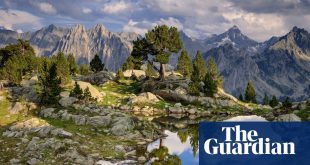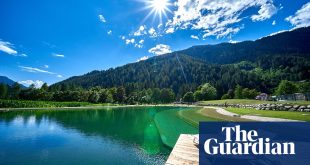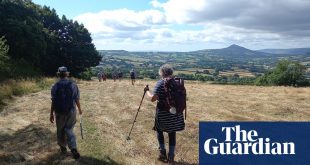As the train winds up the hillside above Lac Léman’s north shore, leaving Montreux behind, I know exactly where we’re heading because I’ve done this journey before. The bustle of the so-called Swiss Riviera will give way to the tranquil farming country of the Pays d’Enhaut, followed by the upmarket resort of Gstaad, before a gentle descent to Interlaken, between the twin lakes of Thun and Brienz in the Bernese Oberland. This 70-mile route, which crosses the röstigraben (the French-Swiss German language border) and links some of Switzerland’s most famous tourist centres, has existed for more than 100 years. But there’s one big difference today: thanks to a world first in rail technology, I don’t have to change trains halfway through.
The GoldenPass line, as it’s called, opened in stages between 1901 and 1916, the realisation of a decades-old dream to connect Lake Geneva, Gstaad and the Bernese Oberland by rail. But the journey wasn’t seamless. Because of the mountainous terrain, the railway from Montreux to Zweisimmen required metric gauge rails (one-metre width), while the stretch from Zweisimmen to Interlaken was built with standard gauge (1.435 metre width). Given no train could travel on both, passengers had to change at Zweisimmen.
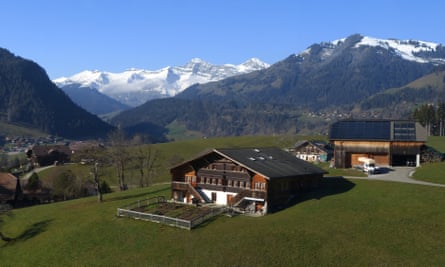
Not much of an inconvenience, you might think. Nevertheless, the Swiss relish an engineering challenge, and this was one the Montreux Oberland Bernois railway (MOB) and BLS (the two train companies operating the line) were determined to solve. After decades wrestling with this technological conundrum, in 2008 MOB proposed a solution: a bespoke bogie (the part of a train’s undercarriage that supports the wheels) which can narrow or widen to fit the different widths of the two railways, as well as adjust to their different platform heights.
Developed in Switzerland by Alstom, the resultant technology is unique. Though variable gauge bogies exist elsewhere, no other can adapt quite as much as this one, making it a world first for Switzerland – a country that just loves a railway-related record. The alpine nation already has the world’s longest and deepest train tunnel (the Gotthard Base Tunnel), the world’s steepest funicular (the Stoosbahn in Schwyz) and Europe’s highest railway station (the Jungfraujoch at 3,454 metres). The world’s most variable bogie might not have quite the same ring, but it’s still a remarkable achievement in the field of train technology.

From 11 December the brand new GoldenPass Express trains, fitted with these bogies, offer passengers a non-stop 3hr 15min journey with no need to cart luggage from platform to platform halfway through. However, that’s not the only reason MOB invested £77m in the project. It also wanted to bring glamour to the line. The new carriages have large two-part windows and table seating in all three classes – second, first and “prestige”. The latter is a step up, literally; the carriage sits 40cms higher than the rest, supposedly immersing passengers more fully in the landscape (though I find the scenery just as glorious from second class), while its heated, reclinable seats can swivel to face the direction of travel. The on-board menu of local products also has added wow factor in first and prestige, including Swiss-made caviar from the Tropenhaus in Frutigen, a fish farm that harnesses thermal water from the mountains.
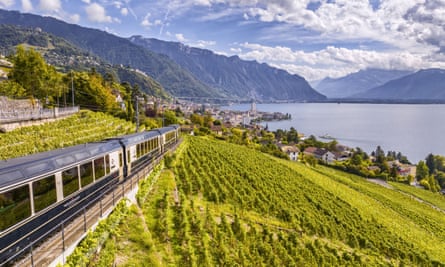
Lovely though all this is, nothing beats the view. This ultra-modern ride takes us past rural rail stations, traditional wooden chalets and farm buildings, forests daubed with fresh snow, and the 15th-century church of Château d’Oex, whose position on the La Motte rock makes it a photogenic focal point during the hot air balloon festival that takes place here every January. Though the idea of the GoldenPass Express is that you don’t get off, there’s plenty of temptation en route.
The technological magic happens about two hours in, when we reach Zweisimmen station. As the carriages pass over a special ramp installed on the track, flaps support their weight so the bogies can adjust with the pressure off. It happens in seconds, and so smoothly that it’s unnoticeable, which is entirely the point. Most of the eight-minute stoppage time is taken up by switching the locomotive that drives the train, since the two railways also run on a different electrical voltage.
Then we’re off again, onwards and gently downwards until we emerge from the hills and skirt Lake Thun on the way to Interlaken, where our journey ends. We’ve swapped French for Swiss German, the palm trees and vineyards of Montreux for views of the Eiger, Mönch and Jungfrau (Grindelwald, with its new Eiger Express cable car and onwards connection to the Jungfraujoch, is just half an hour away) and it’s finally time to disembark. However, the GoldenPass line doesn’t actually stop here. From Interlaken, passengers can continue to Lucerne, though with a change of train since part of that stretch of the railway is cogwheel. Might the new trains be adapted accordingly? It’s another technical challenge for the Swiss to solve – and I have no doubt that one day, they will.
This trip was provided by Switzerland Tourism and the Swiss Travel System. A one-way journey from Montreux to Interlaken costs from CHF53 (£46) in second class. Seat reservations, at extra cost (£17), are advised
 Top Naija News: Nigerian News, Breaking News Nigeria and World News Top Naija News is a daily news publication in Nigeria, delivering the latest breaking news in Nigeria and around the world.
Top Naija News: Nigerian News, Breaking News Nigeria and World News Top Naija News is a daily news publication in Nigeria, delivering the latest breaking news in Nigeria and around the world.
